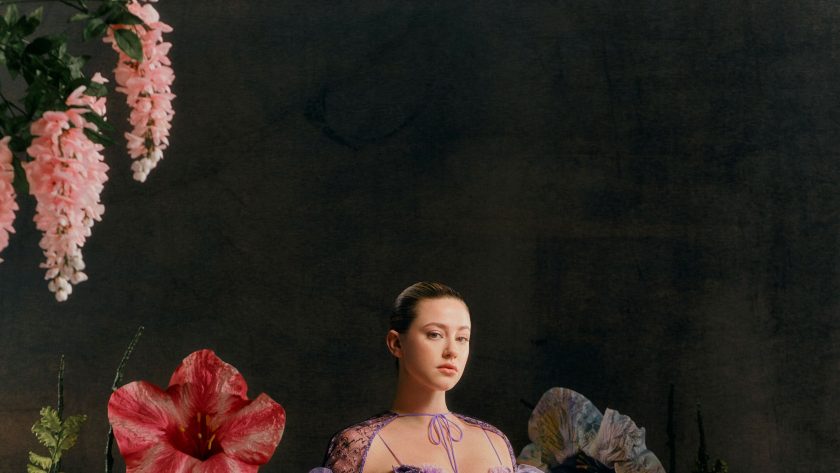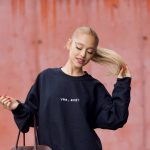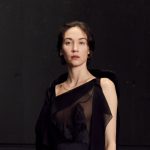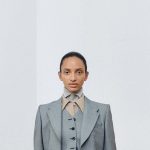At Rodarte, Kate and Laura Mulleavy were indeed thinking about florals for spring. “We were thinking about clothing as gardens and flowers,” Laura said during a recent Zoom call. “The idea of people blooming, in a way, but also, how do we use the history of textures and color from Rodarte and celebrate that in a collection about gardens?” The answer to that question is by leaning in to what they do best. The opening gown, with its bodice made from layers of purple and black lace and beaded embroidery at the bust, a sweeping voluminous skirt made from strips of organza in gradient shades of purple, and a matching capelet in the same organza ruffles, set the tone. They may have been thinking about flowers, but there were no dresses for wallflowers here.
Although there were a few ballgowns, they mostly kept the silhouette narrow and elongated. Silk bias-cut slip dresses, sometimes with little sleeves, had a 1930s feel; but it was their color palette—bright iris, peony yellow, emerald green, cornflower, and ultramarine, punctuated with black lace appliqués or black velvet bows—that made them more readily identifiable as dresses of our current era. “Even if we’re referencing an era, I don’t think that the overall coming-together of a collection ever feels vintage,” Kate explained. “So even if it’s a vibe or a cut that you could align with a time period somehow by the color or the construction, it feels fresh.”
A highlight of the collection was a trio of dresses in an all-over beaded fabric: a ballet pink column with a delicate peplum and a halter neckline, a short sleeve number in emerald green with a ruffled hem and a sculptural neckline that went past the shoulders, and a column gown with a drop waist and tiered ruffles in an alluring shade of orchid purple. They all belied the technical effort of their construction with their sparkly appeal, especially the last one, whose ruffles were shaped by horsehair. “It was one of the more difficult, construction-wise,” Kate explained. “What you don’t realize is that the dress is what it wants to be, and there’s no getting around that—there’s not a single machine stitch in it.”
But the big standouts were the ruffle dresses that harked back to Rodarte’s first collection in 2006. The vertical ruffles were pieced together from different colors of silk organza, silk chiffon, silk charmeuse, and silk georgette and were decorated with fabric rosettes. A short version in shades of lilac had definite youthful appeal, while a long sleeve version in shades of blue and white had a more dramatic effect. A sleeveless number that gathered red, yellow, green, purple, black, and turquoise demonstrated the designers’s mastery of color. “Color is something we’re really sensitive to as designers, and I feel like this is part of that, but it’s also something that you don’t realize until you are constructing the dresses,” Kate said. “A lot of people are interested in silhouette first; but I feel like we’re a hundred percent interested in color and texture first, and then it’s about building out the silhouettes.”



